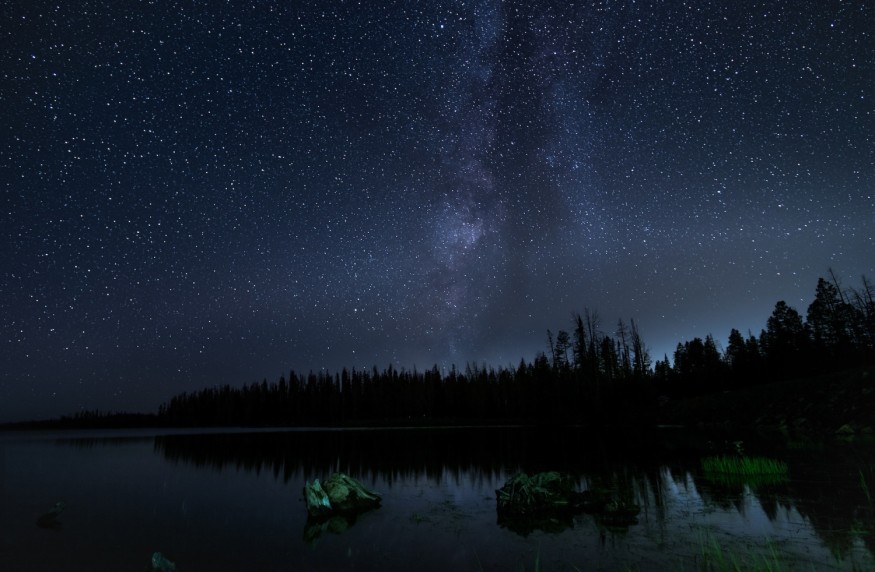
Throughout the year, several national parks will hold the annual astronomy festival's stargazing event. Each national park will provide wonders like the Ring of Fire solar eclipse and constellation tours.
Star Parties: Stargazing for the Astronomy Festival
Public lands are among the only remaining locations where it is simple to view the stars or get a glimpse of bright meteor showers as light pollution worsens. Particularly national parks want to be recognized by the International Dark Sky Association as safe havens for stargazing, and some even conduct astronomy-related programs for tourists.
To take advantage of their pitch-black sky, numerous national parks are hosting stargazing events, commonly referred to as "star parties," this year.
Grand Canyon National Park, Arizona
When: June 10 to 17
Highlight: Constellation tours
Grand Canyon National Park, which spans some of the nation's most inaccessible, untamed territory, is holding its yearly "star party" this month. On both the north and south rims, park authorities are planning events including ranger-led constellation tours, talks, and photography workshops. Visitors may hear from NASA scientists Julie McEnery as well as Aaron Yazzie and discover how the Hopi and Navajo perceive the night sky.
Bryce Canyon National Park, Utah
When: June 14 to 17
Highlight: Star Stories
Bryce Canyon, located in southern Utah, was given the title of "dark sky" in 2019. Although the 35,835-acre park's vibrant, reddish-orange rock formations, known as "hoodoos," are what most visitors come to view during the day, it is also a great area to stay up late. This year's astronomy festival included family-friendly activities, talks and "star stories" presentations, guided stargazing sessions, and even a string concert by the Dark Sky Quartet from northern Arizona.
Badlands National Park, South Dakota
When: July 14 to 16
Highlight: Equipment Demonstration
Fossil beds and enigmatic geological formations such as clastic dikes or sod tables are protected by the Badlands National Park. Because of the area's isolation, there isn't much light pollution to speak of, and the forthcoming astronomy festival, which is being organized in collaboration with the NASA South Dakota Space Grant Consortium, encourages visitors to take advantage of the nighttime.
The plan for this year is still being finalized, but previous activities have included guided tours of scale models of the solar system, technology demonstrations, guest lecturers, and solar telescope views.
Shenandoah National Park
When: August 11 to 13
Highlight: Night Sky Festival
Shenandoah National Park claims that its night sky festival offers a low-lift method for exploring astronomy, with a robust lineup of events, and is conveniently placed within a day's drive of two-thirds of Americans. It lists the timetable on its website.
The almost 200,000-acre park, situated in north-central Virginia in the Blue Ridge Mountains, will have ranger talks, open stargazing events, lectures, presentations, and kid-friendly activities. The exact agenda for this year is still being finalized by staff, but previous events have included everything from nocturnal animals to space weather.
Great Basin National Park
When: September 14 to 16
Highlight: Art in the Dark Program
Great Basin is one of the least visited national parks; in 2021, it had 145,000 visits, according to National Park Service figures, making it the ideal location to contemplate the universe in solitude. The Great Basin Observatory, the only research-grade observatory in a national park, is situated inside the 77,000-acre park, which is situated in far eastern Nevada.
This year's astronomy festival will feature a photography workshop, constellation discussions, guest lecturers, and observatory tours. Participants in the festival's unique "Art in the Dark" session will have the chance to paint in low light and test how their eyes interpret color.
Joshua Tree National Park - October 13-14
When: October 13 to 14
Highlight: Ring of Fire Solar Eclipse
Joshua Tree National Park in Southern California is the closest accessible location for stargazing with its relatively dark sky that can serve the 18 million residents of the Los Angeles metropolitan area, according to the International Dark Sky Association. Travel there to marvel at the stars and planets.
Joshua Tree holds an annual night sky celebration in the fall and was designated as a dark sky park in 2017. The dates this year coincide with an annular "ring of fire" solar eclipse, as luck would have it. The moon will appear to block from 70% to 80% of the sun from Joshua Tree, The Smithsonian Magazine reports.
© 2026 NatureWorldNews.com All rights reserved. Do not reproduce without permission.





